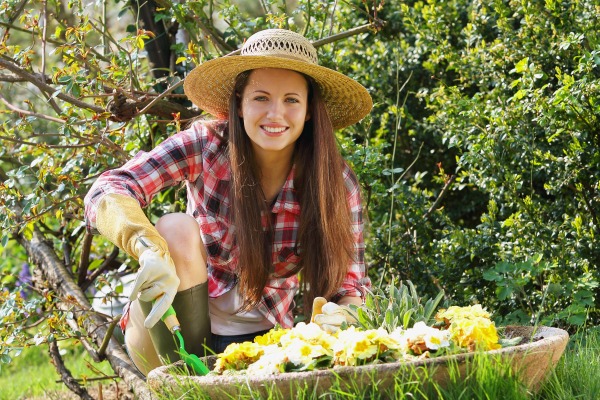When you buy a new home in Brunswick Crossing, you get more than a forever home. You get an entire community with resort-style amenities to keep you and your family healthy and happy — including access to a community garden. Here you can exercise your green thumb with neighbors and friends, planting and growing together as the days get longer and warmer.
But what if you’re a gardening newbie? And perhaps want to contribute to the community garden but are unsure of where to start, what grows best, and of some gardening basics that can help you along the way? We’ve got you covered! Here are six tips to keep in mind as you start your community garden plot.
-
Find out how long your growing season is. One of the worst mistakes you can make is planting something too soon. To have an idea of when it is safe to start your outdoor garden, learn when the last frost of the season is (sometime in the spring). Your outdoor growing season will be from this date until the first frost, which lands in the fall. When the first frost occurs, you can attempt to move certain plants inside, or perhaps leave alone until next season as some things tend to come right back to life once the weather warms.
-
Refer to the USDA Plant Hardiness Zone Map to see what grows best in your area. This is one of the most useful tools to have as you plan and prep for your garden. Use the zone map as a guide so you’re aware of what plant life is capable of growing around you. Sometimes, your area will fall into more than one zone. Once you have your zone number(s), research what will grow best given the climate conditions — which is what the zone number is based off of.
-
Know when to prune (the answer is soon). Unsure of when to prune your spring-flowering shrubs? It’s actually right after the blooms fade. It sounds counterintuitive, but pruning in the fall or winter removes next spring’s flower buds. So once you notice your flowers starting to dim, remember to prune to enhance future flowering so next season’s blossoms are as brilliant as ever!
-
Repel insects by planting garlic, onions, chives, and chrysanthemums. Take preventive measures to secure your harvest by adding plants that bugs do not like. Not only will garlic keep unwelcome critters at bay, but it will also make a wonderful addition to your kitchen spice cabinet. Use these items strategically to help stock your pantry while also protecting the rest of your garden’s plants.
-
Make the most of your plot space. Typically, personal plots in a community garden allow you less space than your average backyard layout. Keep this in mind both when selecting what to grow and how to grow it. Instead of rows, plant in triangles to maximize the space and yields from your plot. Doing so will let you fit more plants in less space — just be sure not to plant anything too close together, as plants are less likely to reach their full size when crowded.
-
It is better to water too little than too much. Plants get thirsty — how could they not? Outside in the sun all day, it makes sense that you’d want to ensure they are getting more than enough water. But the truth is that it’s far easier to revive a dried-up plant than it is to dry out an overwatered plant. It’s best to water early in the day after feeling for moisture in the soil — if the soil sticks to your hand and can be rolled into a ball, that’s a good sign your garden has plenty of moisture.
Brunswick Crossing in Brunswick, Maryland, offers a variety of amazing amenities to keep you happy and healthy. From our community garden plots to our fitness center to our 26 miles of trails and walkways, our community is meant for you to live as well and as comfortably as possible. To learn more about all our community amenities, click on the button below:




